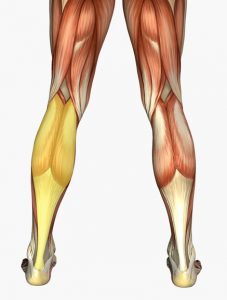So, we talk about functional anatomy, but what is the “Functional” part, and why is is so important. Here at MTS, we are the first to acknowledge that the term “Functional” has become a huge buzz word in the fitness and sports training world and is so over the top, that we now have a tendency to restrict it’s use to a certain degree so not to appear as jumping on the band wagon.
But, at the end of the day, functionality is what we all want. This is for ourselves, our patients, our clients, or our athletes. So, when we talk about anatomy, the “Functional” part is extremly important, because understanding how the muscles work together is how we understand movement, and ultimately, dysfunction.
Multitasking Muscles
To review basic physiology, we need to remember that muscles serve several purposes:
- These are the muscles which we all think about and typically train with our athletes. They are typically and the larger muscles in our body and many times cross two joints.
- An example of this is the Gastrocnemius muscle in the calve. It is responsible for plantarflexing the ankle during jumping and running movements and originates at the distal end of the femur and inserts on the calcaneous.
- Synergists: Synergistic muscles are those which aid in a movement,
 but they are not meant to be the main action causing muscle for the desired movement. These muscles typically are able to perform the action that they are being asked to perform, but because of the size of the muscle or position of the muscle, they are at a mechanical disadvantage over the primary mover.
but they are not meant to be the main action causing muscle for the desired movement. These muscles typically are able to perform the action that they are being asked to perform, but because of the size of the muscle or position of the muscle, they are at a mechanical disadvantage over the primary mover.
- A perfect example of this relationship is the Hamstring group. The hamstrings are designed to assist with hip extension, but the primary mover for hip extension are the Glutes. Unfortunately, too many athletes have dysfunctional glutes that don’t work very well, so the hamstrings become “Synergistically Dominant.” When that happens, the hamstrings become over-taxed and injuries occur. Understanding the role of synergists during movement is very important.
 Stabilizers: Stabilizers are likely the most important muscles in the body, but definately the most overlooked during training. These are the smaller muscles around a joint which keep it’s integrity, even in the most difficult situations.
Stabilizers: Stabilizers are likely the most important muscles in the body, but definately the most overlooked during training. These are the smaller muscles around a joint which keep it’s integrity, even in the most difficult situations.
- When you look at the shoulder, it is impossible to have good shoulder function, if the rhomboids and low to mid traps aren’t functioning well to stabilize the scapula. The scapula is the foundation of the shoulder, and the rhomboids and lower trap are the soil that the footings sit upon. If they aren’t any good, the shoulder (and house, to stick with the building analogy) will crumble. But, unfortunately, the mid back (or hip rotators, or peroneals, or whatever joint you are hoping to work) aren’t real sexy or exciting to train, so they get overlooked. Then we wonder why someone has pain and dysfunction.
Opp0sites
We need to remember that muscles not only work together to create function, but opposing muscles interact as well:
- Agonists: Agonists are the muscles which work to create motion. You can usually group both primary movers and synergists into this category.
 As with primary, these are the muscles which usually get the most attention during a training session because they are the first muscles which come to mind. But, if they are trained too much, dysfunction will certainly ensue.
As with primary, these are the muscles which usually get the most attention during a training session because they are the first muscles which come to mind. But, if they are trained too much, dysfunction will certainly ensue. - An example that comes to mind is the quadricep group during the act of sprinting. They are one of the primary accelerators of the lower body because of their ability to extend the lower leg during the pushing action of running.
- Antagonists: These are the opposing muscles to the agonists. They work against the agonists to decelerate body segments and stabilize joints. This can be both productive and counter productive, depending upon the situation. If they are over active when they shouldn’t be, they will restrict movement which is desired for athletic performance. But, if they are underactive, injury typically occurs because they aren’t doing a good enough job stabilizing joints or slowing down body segments to control motion.
- To continue with the example above, if the quads are considered an agonist for sprinting, then the hamstrings can be considered antagonists. Their primary role during sprinting is to decelerate the lower leg to control toe placement while running. If the hamstrings are too active during sprinting, they will limit knee extension and shorten up stride length, thus hurting athletic performance. If they are underactive, they will not fire eccentrically at the right time to decelerate the lower leg, and a hamstring injury will occur.
The right balance between agonists and antagonists is extremely important for proper health and good performance. Exploiting the relationship between agonists and antagonists is also very useful for flexibility training. For more information on training flexibility for performance, click here.



Leave a Reply